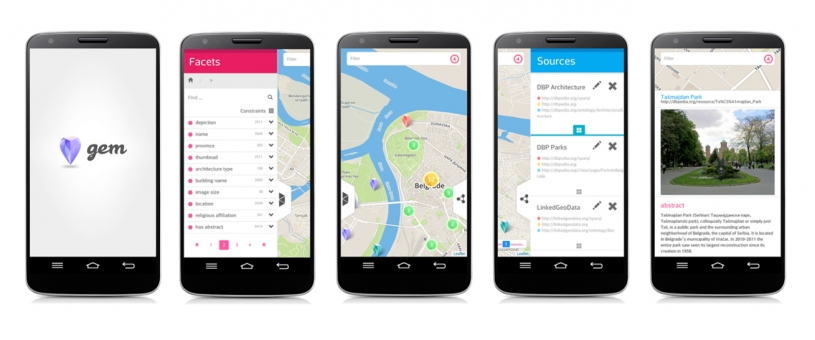Finalist

The explosion of location aware technology has made the move of geographical information to their, perhaps, more natural setting, i.e. mobile devices, inevitable for any geospatial software striving to survive the demands of the ever-growing market. However, the functionality of the majority of available navigation systems is developed upon closed and proprietary solutions for both maps and software applications, meaning that they are often unable to offer information tailored specifically to an individual user’s needs and cannot be extended by third parties.
A typical tourist scenario is hard to picture without a map. Yet, such a scenario implies you are not familiar with your surroundings and, therefore, often not sure how to find the things that are of interest to you. Typical geospatial browsers will provide you with common exploration tools that will most often include a slippy map combined with keyword search, categorized points of interest (POIs) and a fixed set of filters. But, all of these imply either that you know what it is you’re looking for, or that the preset collection of POIs and criteria will be enough to satisfy your needs. In real life, however, those needs will often be affected by the given context, which is, in turn, dependent on multiple, dynamic factors, such as the place you’re visiting, your mood, interests, background etc. Imagine using your favorite geospatial browser to answer the following question:
“Where are the nearest buildings designed by Frank Lloyd Wright, typical of the Prairie School movement?”
GEM (Geospatial-semantic Exploration on the Move) is a cross-platform geospatial exploration tool that offers a rich mobile experience and overcomes the abovementioned limitations of conventional solutions by exploiting all strengths of the Linked Open Data paradigm, such as built-in semantics in open, crowd-sourced knowledge found in publicly available sources, loaded and filtered on-demand, according to user's needs, in order to prevent maps from overpopulating.
Video: https://www.youtube.com/watch?v=KoAdrNiDljU
Project: https://github.com/GeoKnow/GEM